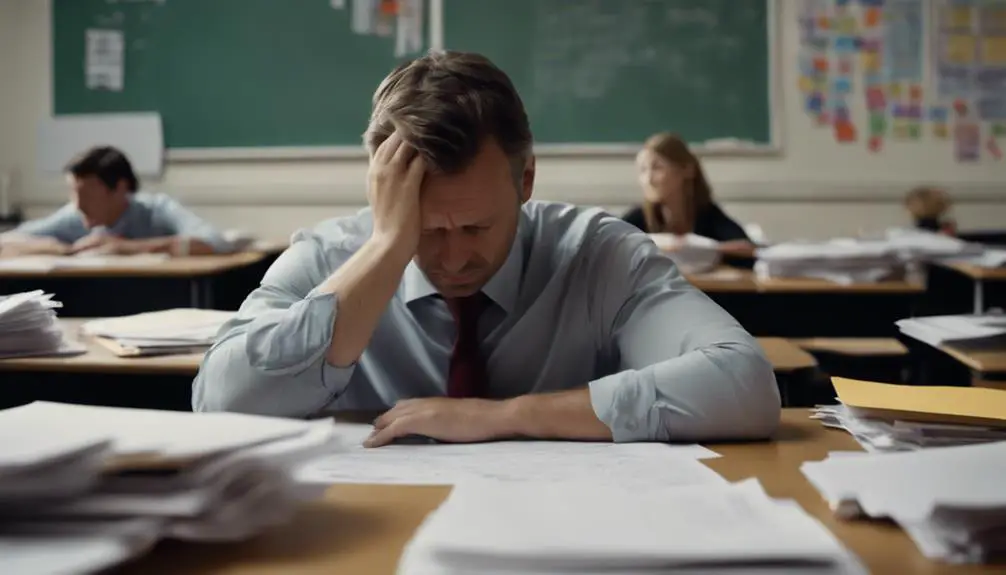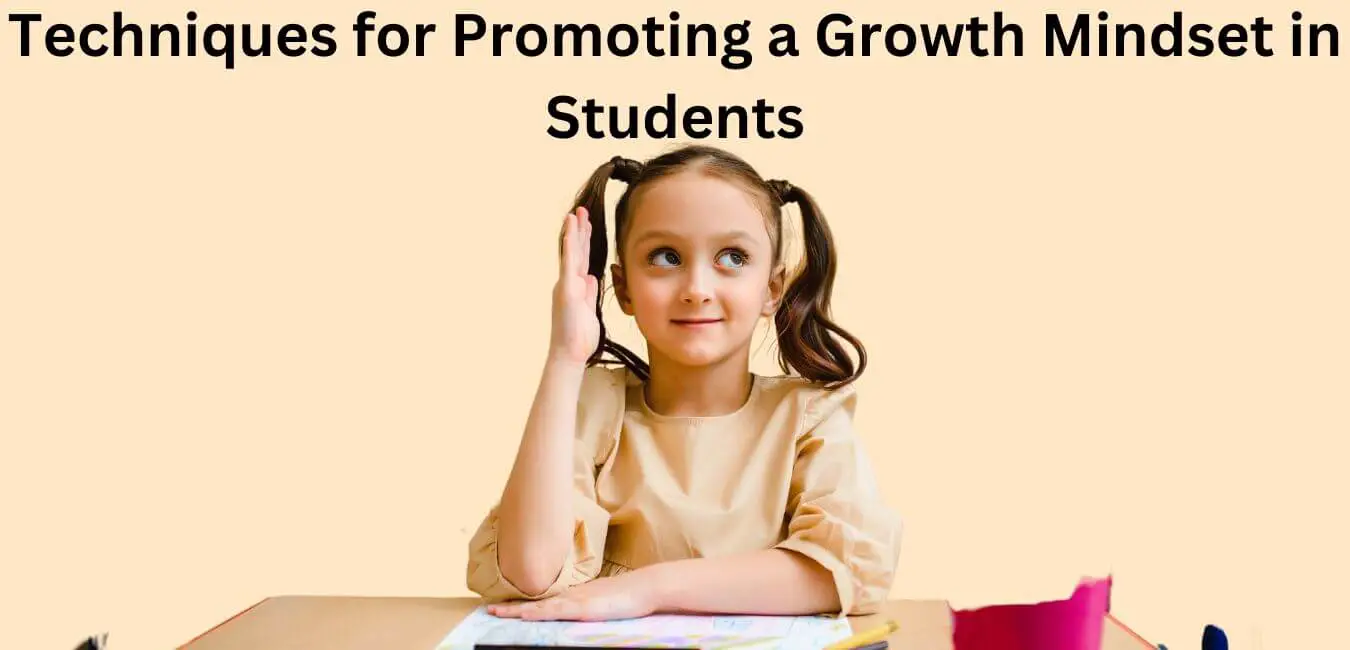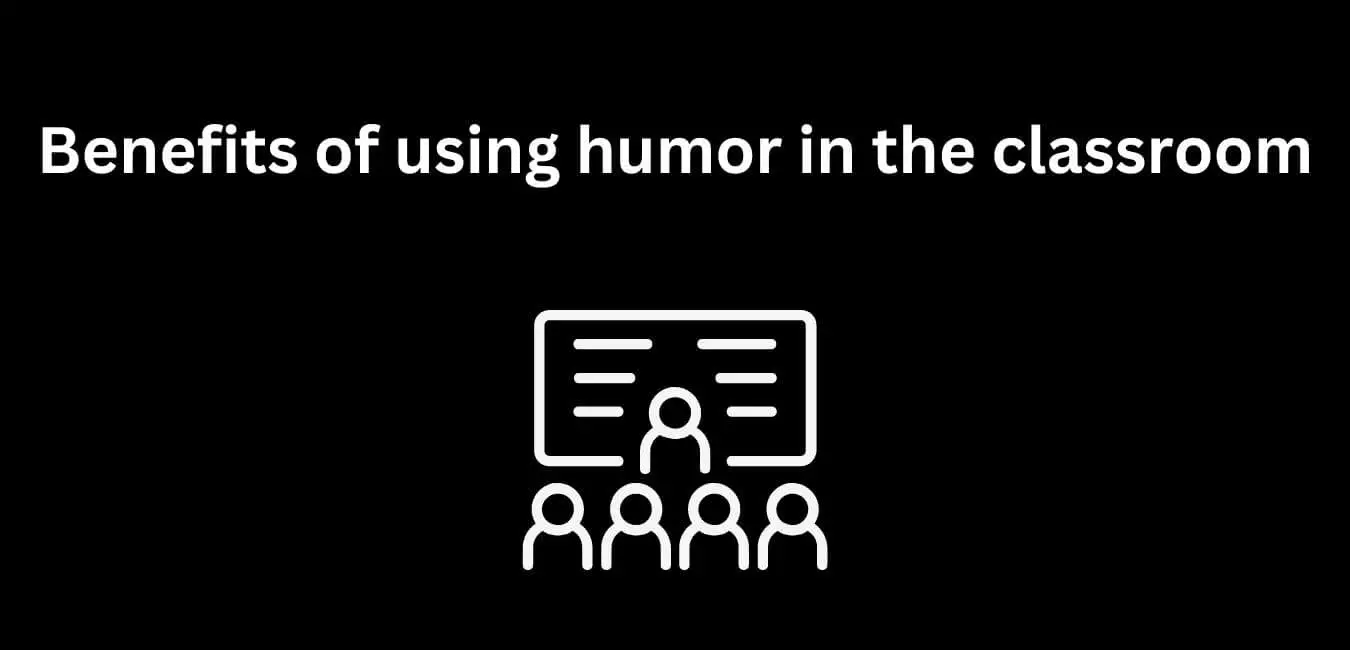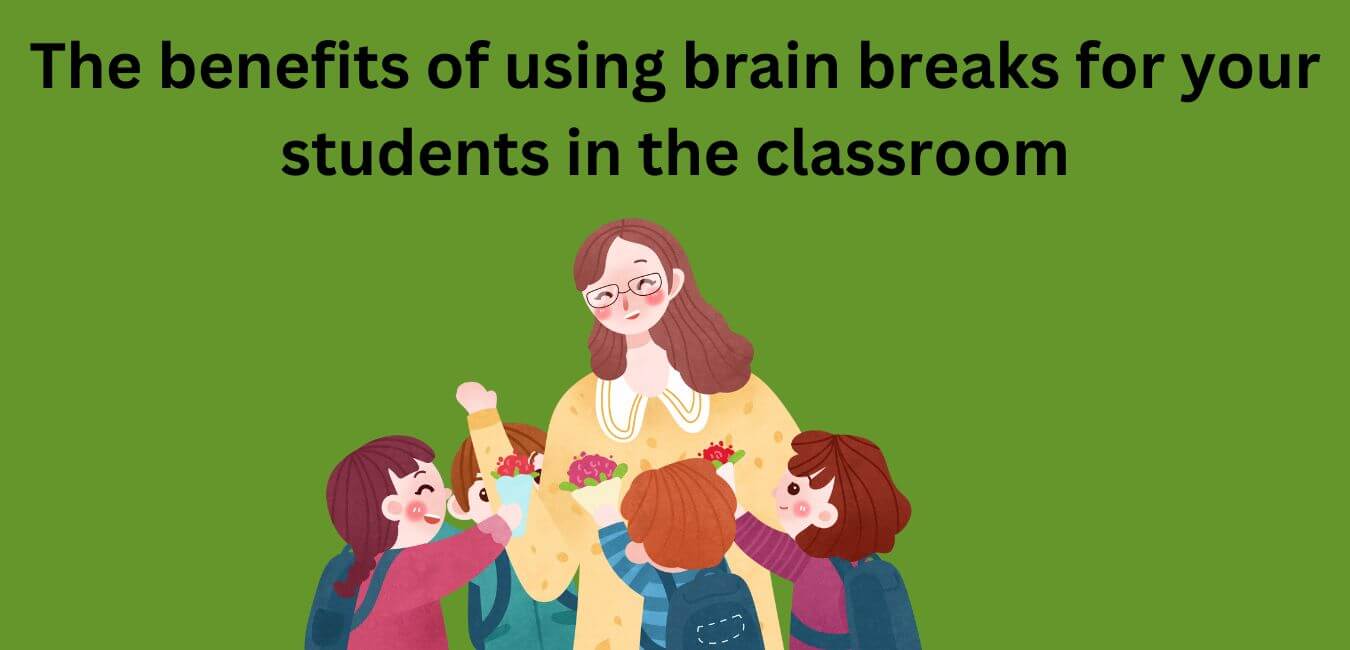In today’s fast-paced and information-driven world, clear communication has become an essential skill for success in various aspects of life. From personal relationships to professional endeavors, the ability to effectively express oneself and understand others is vital.
This importance is particularly evident in the classroom, where students and teachers engage in a constant exchange of ideas and knowledge. Mastering clear communication in this setting not only enhances academic performance but also fosters a positive learning environment.
In this article, we will explore 13 essential tips for classroom success, focusing on strategies that students can employ to improve their communication skills and maximize their educational experience.
Whether it’s participating in class discussions, delivering presentations, or engaging in group projects, these tips will empower students to effectively communicate their thoughts and ideas, ultimately leading to greater learning outcomes and personal growth.
So, let’s look at the invaluable tips and unlock the power of clear communication for classroom success.
Why Clarity is Important in Effective Communication with Your Students
Clarity is crucial in effective communication with my students for several reasons.
Enhances Student Understanding
My clear communication with students enhances their understanding and fosters a productive classroom environment. By prioritizing clarity in my communication, I promote student engagement, which is crucial for effective learning.
When students understand what I’m saying, they’re more likely to actively participate in class discussions and activities. This active participation not only improves their comprehension but also contributes to positive classroom dynamics.
Clear communication builds trust and rapport between students and me, creating an open and supportive learning environment. Students feel comfortable asking questions and seeking clarification, leading to deeper understanding and increased academic achievement.
Reduces Misinterpretation and Confusion
Using clear communication in the classroom reduces misinterpretation and confusion, ensuring that students understand the information being conveyed. This promotes clarity and enhances comprehension, making it easier for students to grasp complex concepts.
When instructions or explanations are unclear, students may misunderstand the content and become confused. This can hinder their ability to learn and perform well academically. Clear communication minimizes confusion by providing students with concise and precise information that they can easily comprehend.
It encourages effective communication between teachers and students, fostering a positive learning environment. By using simple language, avoiding jargon, and providing clear examples, teachers can effectively convey their message and ensure that students receive the information accurately.
Ultimately, clear communication reduces misunderstanding and promotes successful learning outcomes.
Fosters Student Engagement
I frequently strive to communicate clearly with my students, fostering their engagement and ensuring effective communication in the classroom.
Clear communication is essential in creating an environment that promotes collaboration, participation, and engagement. When students understand instructions and expectations clearly, they’re more likely to actively participate and engage in the learning process.
Clarity also promotes interaction among students, as they can easily comprehend and respond to each other’s ideas and perspectives.
Additionally, clear communication improves students’ communication skills by providing them with a model to follow and practice. By emphasizing the importance of clarity in communication, students develop the ability to express their thoughts and ideas effectively, both in and outside the classroom.
Builds Trust and Rapport
The teacher’s clear communication builds trust and rapport with their students. Building relationships and developing connections are essential for effective communication in the classroom. By fostering trust and creating rapport, the teacher establishes an understanding with their students.
When students feel that their teacher is clear in their communication, they’re more likely to trust and engage with the material being taught. Clear communication helps to remove any confusion or misunderstandings that may arise during classroom discussions, leading to a more cohesive and productive learning environment.
It also allows students to feel comfortable approaching their teacher with questions or concerns, further strengthening the teacher-student relationship. Overall, clear communication is crucial in building trust, establishing understanding, and creating a positive learning atmosphere in the classroom.
Promotes Active Participation
Promoting active participation is achieved through clear communication with students. By ensuring clarity in our communication, we create an environment that encourages students to actively engage in their learning. Here are five reasons why clarity is important in promoting active participation:
- Interactive exercises: Clear instructions and explanations enable students to fully participate in interactive exercises, enhancing their understanding and retention of the material.
- Collaborative projects: Clear communication ensures that students understand their roles and responsibilities, allowing them to actively contribute to collaborative projects and learn from their peers.
- Group discussions: Clear communication promotes meaningful exchanges of ideas, enabling students to actively participate in group discussions and develop critical thinking skills.
- Role-playing activities: Clear instructions and expectations enable students to fully immerse themselves in role-playing activities, fostering active participation and enhancing their understanding of different perspectives.
- Gamification techniques: Clear communication in gamification techniques, such as clear rules and objectives, motivates students to actively participate and compete, making the learning experience more engaging and enjoyable.
Supports Student Learning Outcomes
To achieve successful classroom outcomes, clear communication is essential in effectively supporting student learning. Clarity in communication supports student learning outcomes by ensuring that students understand the information being presented to them. When instructions and explanations are clear, students are more likely to comprehend and retain the material, leading to improved learning outcomes.
Clear communication also helps students feel more confident in their understanding, allowing them to actively engage in the learning process. By providing clear explanations and examples, teachers can support students in developing a deep understanding of the subject matter.
In addition, clear communication fosters a positive and supportive learning environment, where students feel comfortable asking questions and seeking clarification. Ultimately, clear communication plays a crucial role in supporting student learning outcomes and promoting overall academic success.
Minimizes Misunderstandings and Mistakes
By ensuring clear communication, I minimize misunderstandings and mistakes when effectively communicating with my students. This promotes clarity, enhances communication, and improves comprehension in the classroom.
Here are four reasons why clarity is important in effective communication with students:
- Minimizes misunderstandings: Clear communication helps students understand instructions and expectations accurately, reducing confusion and potential errors.
- Reduces mistakes: When students receive clear and concise information, they’re less likely to make mistakes in their assignments or tasks.
- Promotes clarity: Clear communication allows students to grasp complex concepts more easily, ensuring they have a solid foundation for further learning.
- Enhances communication: Effective communication fosters a positive and open classroom environment, encouraging students to ask questions and actively participate in discussions.
Encourages Open Communication
Encouraging open communication with my students is crucial for fostering a positive and engaging learning environment. Open communication allows students to feel comfortable expressing their thoughts, ideas, and concerns, leading to increased participation and collaboration in the classroom.
By actively listening to my students, I’m able to understand their needs and provide appropriate support. Non-verbal cues, such as body language and facial expressions, also play a significant role in effective communication.
Technology usage can further enhance open communication, as it allows for real-time feedback and interaction. Additionally, by addressing language barriers, I ensure that all students have equal opportunities to engage in meaningful conversations.
Increases Student Motivation
As I continue fostering open communication with my students, I’ve found that it increases their motivation to actively participate in the classroom.
When I effectively communicate with my students, it not only enhances their engagement but also fosters trust between us.
This trust creates a safe and supportive environment where students feel comfortable expressing themselves and taking risks.
Through clear communication, I’m able to encourage participation from all students, ensuring that their voices are heard and valued.
This active participation improves the dynamics of the classroom, as students feel more connected and invested in their learning.
Improves Classroom Dynamics
Clear communication in the classroom improves the dynamics and overall learning experience for both students and myself. By improving communication, fostering collaboration, resolving conflicts, promoting inclusivity, and enhancing learning, a positive classroom environment is created where students feel comfortable expressing their thoughts and ideas. This leads to more meaningful discussions and increased engagement in the learning process. The following table highlights the benefits of clear communication in the classroom:
| Benefits of Clear Communication |
|---|
| Fosters Collaboration |
| Resolves Conflicts |
| Promotes Inclusivity |
| Enhances Learning |
When students understand instructions clearly and feel heard, they are more likely to work together, share their perspectives, and contribute to a collaborative learning environment. Clear communication also helps to resolve conflicts and misunderstandings promptly, preventing them from escalating and negatively impacting the classroom dynamics. Additionally, promoting inclusivity through clear communication ensures that all students feel valued and included in the classroom community. Ultimately, clear communication enhances the learning experience for both students and myself, creating a positive and productive classroom environment.
Enhances Overall Student Experience
Improving clarity in my communication with students enhances their overall learning experience. Clear communication is crucial in the classroom as it allows for effective classroom communication and enhances student engagement strategies.
Here are some benefits of clear communication that contribute to enhancing the student experience:
- Improved Understanding: Clear communication helps students understand instructions, expectations, and concepts more easily, leading to better comprehension and retention.
- Increased Participation: When students clearly understand what’s expected of them, they’re more likely to actively participate and engage in classroom discussions and activities.
- Reduced Confusion: Clear communication minimizes confusion and misunderstandings, creating a positive and productive learning environment.
- Enhanced Motivation: When students feel heard and understood through clear communication, it boosts their motivation and confidence, leading to improved performance and overall satisfaction.
Practical and Essential Tips for Clarity in Effective Communication with Your Students
When it comes to effective communication with my students, there are several practical and essential tips that I find helpful.
Active Listening Techniques
I actively engage in practicing effective active listening techniques to enhance communication clarity with my students. Active listening benefits both the students and me as their teacher. It allows me to fully understand their needs, concerns, and ideas, fostering a positive and inclusive learning environment.
Here are some effective active listening techniques that I employ in the classroom:
- Maintain eye contact: By looking directly at the students, I show them that I’m fully engaged in the conversation.
- Paraphrase and summarize: I often restate what the students have said to ensure that I’ve understood them correctly.
- Ask open-ended questions: This encourages students to elaborate on their thoughts, promoting deeper discussions.
- Provide feedback: I give constructive feedback to show that I value their contributions and encourage ongoing communication.
Non-Verbal Communication Cues
Maintaining awareness of non-verbal cues is crucial for clear and effective communication with my students in the classroom. The importance of body language can’t be overstated, as it can convey emotions, attitudes, and intentions without the need for words.
Non-verbal cues in the classroom, such as facial expressions, play a significant role in communication. A smile can indicate warmth and approachability, while a frown can signal disapproval or concern. Similarly, gestures have their own meanings and can enhance or detract from the message being conveyed. Being aware of these gestures and their meanings can help me better understand my students and tailor my communication accordingly.
Furthermore, non-verbal communication can also have an impact on student behavior. By paying attention to these cues, I can better gauge their engagement, interest, and understanding, allowing me to adjust my teaching approach as needed.
Using Visual Aids
As an educator, I find that using visual aids is an essential tool for enhancing clarity and effective communication with my students in the classroom, allowing me to engage them in a more meaningful way.
Here are some practical tips that I’ve found useful in utilizing visual aids:
- Interactive presentations: Incorporating interactive elements such as quizzes or polls into presentations can help keep students engaged and actively participate in the learning process.
- Visual aids in lectures: Using charts, graphs, and images can help students visualize complex concepts and make connections between different ideas.
- Engaging slide design: Creating visually appealing slides with clear and concise information can capture students’ attention and facilitate comprehension.
- Effective use of diagrams: Diagrams can simplify complex information and aid in understanding relationships between different elements.
Simplify Complex Concepts
One effective way I simplify complex concepts for clear communication with my students is through the use of visual aids.
By breaking down information and simplifying content, visual aids help to clarify ideas and make concepts understandable.
I find that using diagrams, charts, and graphs helps to visually represent abstract concepts and make them more concrete for students.
The use of colors, symbols, and illustrations also helps to engage students’ attention and enhance their understanding.
Additionally, visual aids can be used to sequence steps or processes, making it easier for students to follow along and grasp complex ideas.
Encourage Questions and Participation
To promote clarity in effective communication with my students, I actively encourage questions and participation throughout my classroom discussions and activities. By doing so, I aim to create an environment that promotes curiosity, active learning, and critical thinking. Here are some ways I incorporate these principles into my teaching:
- Promoting curiosity: I encourage students to ask questions and explore topics beyond the surface level, fostering a sense of curiosity and inquiry.
- Active learning: I incorporate hands-on activities, group discussions, and interactive exercises to engage students in the learning process actively.
- Building confidence: I create a supportive classroom environment where students feel comfortable expressing their thoughts and ideas without fear of judgment or criticism.
- Facilitating critical thinking: I challenge students to analyze information critically, evaluate different perspectives, and develop their reasoning skills.
Providing Clear Instructions
I prioritize the clarity of my instructions to ensure effective communication with my students. Clear instructions are of utmost importance and have a significant impact on student comprehension and success.
To provide clear instructions, I employ various strategies such as breaking down complex tasks into smaller steps, using visuals or demonstrations, and providing examples. By doing so, I enhance student comprehension and make it easier for them to follow directions.
However, there are challenges in delivering clear instructions, such as language barriers or students with learning difficulties. To overcome these challenges, I use repetition, encourage questions, and provide additional support when needed.
Ultimately, clear instructions play a vital role in student success as they enable students to understand and complete tasks accurately and confidently.
Using Examples and Analogies
Continuing from the previous subtopic of providing clear instructions, an effective strategy for clarity in communication with my students is using examples and analogies. This technique helps to make complex concepts more relatable and understandable.
Here are some practical examples of how I incorporate analogies and real-life comparisons in my teaching:
- I compare the process of photosynthesis to a factory, where sunlight is the raw material, and glucose is the final product.
- To explain the concept of gravity, I use the analogy of a magnet pulling a paperclip towards it.
- I use metaphors in education, such as comparing learning to building a puzzle, where each piece represents new knowledge.
- Storytelling techniques help me engage students by using narratives to illustrate abstract ideas.
Using Concise Language
Clear and concise messaging is crucial for enhancing classroom communication. By using effective communication techniques and communication strategies, I can make a significant impact on my students’ understanding and engagement.
Concise language helps to eliminate confusion, ensuring that my message is direct and easily comprehensible. It allows me to convey information efficiently and effectively, saving time and keeping my students focused.
Giving Constructive Feedback
To effectively communicate with my students and provide clarity in the classroom, it’s important to give practical and essential tips for giving constructive feedback. Constructive criticism plays a crucial role in helping students grow and improve. Here are some feedback techniques that can enhance effective evaluation:
- Be specific and focused: Clearly identify the areas that need improvement and provide specific examples.
- Use a growth mindset approach: Encourage students to view feedback as an opportunity for growth and development.
- Balance criticism with positive reinforcement: Highlight the strengths and progress made by the students alongside areas for improvement.
- Offer actionable suggestions: Provide clear and actionable steps for students to take in order to enhance their performance.
Being Aware of Cultural Differences
As an educator, it is crucial to be mindful of cultural differences in order to effectively communicate with my students and ensure clarity in the classroom. Cultural awareness, cross-cultural communication, intercultural communication, cultural sensitivity, and diversity understanding are all essential components of creating an inclusive learning environment. To emphasize the importance of cultural differences, I have provided a table below:
| Cultural Awareness | Cross-Cultural Communication | Intercultural Communication |
|---|---|---|
| Recognizing and understanding different cultural values, beliefs, and practices | Communicating effectively with individuals from different cultural backgrounds | Developing skills to navigate and bridge cultural differences |
Using Technology Effectively
I’ve found that incorporating technology into my teaching has greatly enhanced my ability to communicate effectively with my students. It has opened up new possibilities for digital engagement, allowing me to create interactive and engaging lessons that capture their attention.
Online collaboration tools have made it easier for students to work together, whether they’re in the same physical space or participating in virtual learning. Technology integration has also allowed me to provide personalized feedback and support to each student, helping them to progress at their own pace.
Effective online communication is crucial in ensuring that students understand the content and can ask questions when needed. Overall, technology has revolutionized the way I communicate with my students and has made the learning experience more dynamic and interactive.
Practicing Clarity in Writing
In my experience, clear writing is essential for effective communication with students. As an educator, I have found that employing communication strategies and mastering writing clarity greatly enhances my ability to convey information and engage with my students. Effective expression is key to ensuring that students understand and absorb the material being taught. Clear messaging allows for seamless comprehension and minimizes confusion. To achieve this, I utilize various articulation techniques to ensure that my writing is concise, precise, and easily understandable. By employing these strategies, I create an environment where students can fully grasp the concepts being taught, leading to greater academic success.
| Communication Strategies | Articulation Techniques |
|---|---|
| Use simple language | Be specific |
| Break down complex ideas | Avoid jargon |
| Provide examples | Use bullet points |
Using Clear Body Language
To enhance effective communication with my students, I utilize practical and essential tips for clarity by employing clear body language.
Nonverbal cues play a vital role in conveying messages and creating a positive classroom atmosphere.
Visual aids, such as charts and diagrams, help simplify complex concepts and enhance understanding.
Using concise language ensures that my instructions and explanations are clear and easily comprehensible.
Additionally, being culturally aware allows me to adapt my body language and use appropriate gestures that resonate with my diverse student population.
Adapting Communication Style
Utilizing clear body language and adapting my communication style is essential for achieving clarity and effectiveness in my interactions with students.
Adapting my communication style involves using active listening techniques to understand their needs and concerns. I pay attention to non-verbal communication cues, such as facial expressions and body language, to gauge their understanding and engagement.
In cases where there are language barriers, I make an effort to simplify my language and use visual aids to aid comprehension. Addressing language barriers also involves being patient and encouraging students to ask questions or seek clarification.
Addressing Language Barriers
Adapting my communication style to address language barriers is crucial for achieving clarity and effectiveness in my interactions with students. Promoting inclusion, bridging gaps, building connections, and overcoming barriers are essential in enhancing my communication skills.
Here are some practical tips to address language barriers:
- Use visual aids: Incorporating visuals such as images, diagrams, and videos can help students understand concepts even if they’re struggling with the language.
- Simplify language: Avoid using complex vocabulary or sentence structures. Instead, use simple and clear language to ensure comprehension.
- Provide context: Giving examples, real-life scenarios, and relating the content to students’ experiences can help them grasp the meaning behind the language.
- Encourage participation: Creating a supportive and inclusive environment where students feel comfortable asking questions and expressing themselves can facilitate effective communication.
Cases
In my experience as a teacher, I’ve encountered several cases where effective communication played a crucial role in resolving conflicts. An example is below:
Conflict Resolved
I successfully resolved a conflict between two students in my classroom through effective communication. It was a typical day when I noticed tension brewing between Sarah and John. Using conflict resolution techniques, I immediately intervened to prevent the situation from escalating. Here’s how I managed to diffuse the conflict:
- Utilized effective communication strategies: I actively listened to both students, allowing them to express their feelings and concerns.
- Built student relationships: I reminded Sarah and John of their shared interests and strengths, emphasizing the importance of friendship.
- Encouraged problem-solving skills: I guided them through a step-by-step process, encouraging them to find a mutually beneficial solution.
- Employed classroom management techniques: I created a safe and supportive environment, ensuring that both students felt heard and respected.
Through these methods, I was able to foster understanding, teach conflict-resolution skills, and ultimately bring harmony back into the classroom.
Conclusion
Clear communication is the key to success in the classroom.
By adopting practical tips and techniques, such as using simple language, providing examples, and actively listening to students, teachers can create an environment where understanding and learning thrive.
As the saying goes, ‘Communication is the bridge that connects minds, paving the way for knowledge to flow freely.’
So let’s build strong bridges, fostering effective communication, and ensuring classroom success for all.















